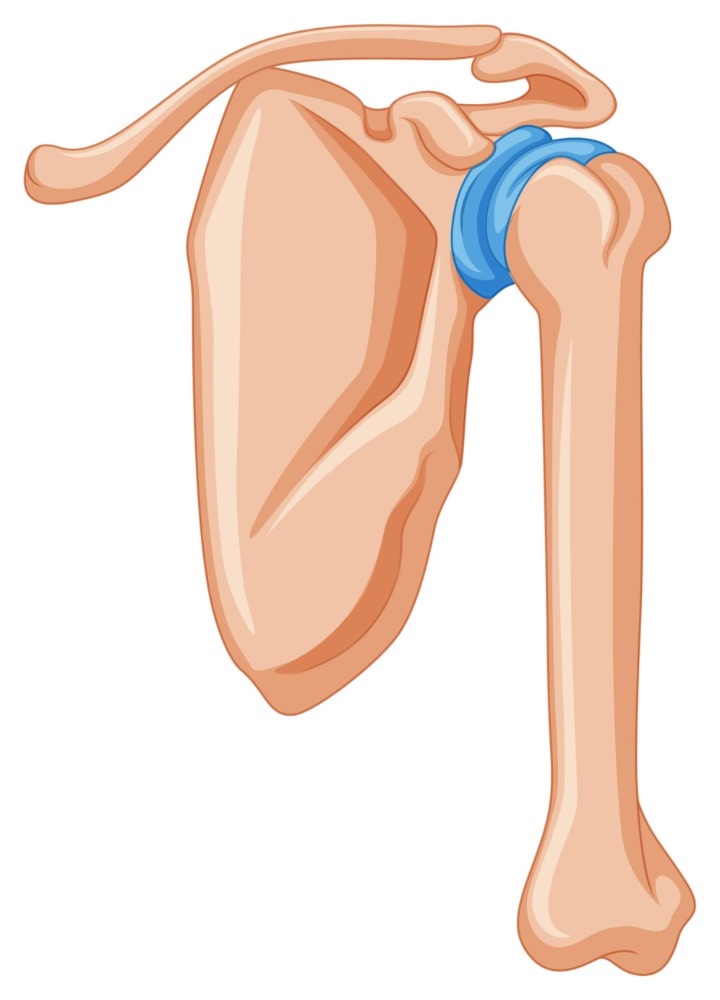Frozen shoulder, also known as adhesive capsulitis, is a condition that causes stiffness, pain and restriction in the shoulder joint. It can occur gradually over time or can develop suddenly and can have a significant impact on daily life.
The symptoms of a frozen shoulder include pain and stiffness in the shoulder that limits its range of motion. Simple tasks like reaching for objects can become difficult or impossible, causing frustration and discomfort.
The cause of is not always clear. However, some factors that may contribute to its development include injury, underlying medical conditions such as diabetes or thyroid disorders, or prolonged periods of immobilisation.
Fortunately, effective treatment options are available to manage a frozen shoulder’s symptoms. These can include physical therapy, exercises and other interventions. Seeking expert advice is important to ensure proper diagnosis and treatment, regain mobility, and eliminate pain.
This condition is also known as adhesive capsulitis, is a condition that affects the shoulder joint, causing stiffness, restriction of mobility, and pain. It typically develops gradually over time and can be challenging to diagnose without the help of a medical professional.
Adhesive capsulitis is characterised by the thickening and tightening of the capsule surrounding the shoulder joint. This results in a decrease in synovial fluid, which lubricates the joint and allows for smooth movement.

Photo Credit: brgfx
The cause is not always clear, although it is often associated with certain medical conditions such as diabetes, thyroid disorders, and heart disease. It can also occur following a shoulder injury or surgery or prolonged immobility.
Despite its name, this is a treatable condition. Seeking expert advice from a medical professional is essential to determine the most effective treatment plan for regaining shoulder mobility and decreasing pain.
Frozen shoulder is a condition that restricts shoulder mobility and causes significant pain and stiffness. It often develops gradually, with symptoms worsening over time.
In addition to the common symptoms, individuals with frozen shoulders may also experience:
It’s important to recognise the symptoms and seek treatment as early as possible to prevent further progression and improve shoulder mobility.
Frozen shoulder, also known as adhesive capsulitis, can develop for several reasons. In some cases, it can occur without a clear cause; in others, it can be attributed to a specific injury or medical condition.
The primary cause is a condition called adhesive capsulitis. In this condition, the shoulder capsule, a layer of connective tissue surrounding the shoulder joint, becomes inflamed and thickened. This inflammation and thickening result in the restriction of movement and pain associated with this condition.
There is no clear reason for adhesive capsulitis, although some believe it can result from an autoimmune response or be triggered by previous shoulder injuries.
Several medical conditions can also lead to a frozen shoulder, including diabetes, heart disease, and stroke. These conditions can increase the risk of developing this condition, and individuals with these conditions should be aware of the potential risk.
Shoulder surgery or injury can also lead to a frozen shoulder. After surgery or an injury, the shoulder may be immobilised for an extended period, leading to adhesive capsulitis.

Photo Credit: Freepik
You must seek medical attention if you experience any shoulder pain or stiffness. Early treatment can help limit the development of a frozen shoulder and reduce the severity of symptoms.
When it comes to treating frozen shoulder, there are several options available. The type of treatment you receive depends largely on the severity of your symptoms and the stage of the condition.
One of the most common treatment is corticosteroids. These can be injected directly into the shoulder joint to help reduce inflammation and alleviate pain.
Physical therapy can also be an effective treatment option. A trained physical therapist can help you perform specific exercises to improve shoulder mobility and reduce stiffness.
In some cases, your doctor may recommend manipulation under anesthesia. This involves stretching the shoulder joint while you are under anesthesia to help improve your range of motion.
As mentioned above, physical therapy is a common and effective treatment option. Your physical therapist will work with you to develop a specific exercise program tailored to your needs. These exercises may include stretching, range of motion, and strengthening exercises.
It is important to note that physical therapy can take time to see results, and you may need to continue with your exercises even after your pain and stiffness have subsided.
In addition to physical therapy exercises, there are several exercises you can do at home to help manage your symptoms. These exercises are designed to improve shoulder mobility and reduce pain and stiffness.
Sometimes, your doctor may recommend other interventions to help manage your frozen shoulder symptoms. These may include heat or ice therapy, massage, or acupuncture.

Photo Credit: tonodiaz
It is important to seek expert advice to determine the best treatment plan for your needs.
Overall, there are several treatment options available for frozen shoulders. It is important to seek expert advice to determine the best treatment plan for your needs. With the right combination of treatments and exercises, it is possible to regain mobility and eliminate pain.
Rehabilitation and recovery are essential components when treating a frozen shoulder. Once the pain and inflammation have subsided, rehabilitation exercises can help to regain mobility and function in the affected shoulder.
But first, it is necessary to consult with your doctor or physical therapist to understand what exercises are suitable for your specific condition and stage of healing.
Performing the wrong exercises or overexerting during rehabilitation can cause further damage and delay the healing process.
Typically, rehabilitation exercises involve stretching and strengthening exercises to improve shoulder mobility and reduce stiffness. The goal is to gradually increase the range of motion, alleviate pain and stiffness, and restore normal shoulder function.
Several exercises are commonly recommended for individuals recovering from frozen shoulder. These include:
It is important to perform these exercises regularly and consistently under the guidance of a professional.
Physical therapy can also be effective in treating frozen shoulders. A physical therapist can assess your condition and develop a customised treatment plan that includes various exercises and stretches to improve your shoulder mobility and function.
Physical therapy may also involve using heat or ice packs to alleviate pain and inflammation and manual therapy techniques such as massage or joint mobilisation.

Photo Credit: Freepik
Physical therapy can be a valuable tool in helping individuals with frozen shoulder regain full shoulder movement and function.
Committing to your physical therapy appointments and following the prescribed exercises and treatment plan is important to ensure the best possible outcome.
In summary, rehabilitation and recovery are crucial parts of the treatment process for a frozen shoulder. With proper guidance from a healthcare professional, exercises, physical therapy, and commitment to recovery, individuals with frozen shoulders can eventually regain shoulder mobility and function.
Do you have questions about frozen shoulder? Here are some of the most frequently asked questions about the condition and its treatment options.
Frozen shoulder, also known as adhesive capsulitis, is a condition that causes pain, stiffness and restricted mobility in the shoulder joint. It typically progresses slowly, worsening over time if left untreated.
The exact cause of a frozen shoulder is unknown, but it is believed to be related to inflammation and thickening of the shoulder capsule, which surrounds and supports the shoulder joint.
Certain medical conditions, such as diabetes, can increase the risk of developing a frozen shoulder. Immobilisation of the shoulder following an injury or surgery can trigger the condition.
Diagnosing a frozen shoulder usually involves a physical exam and a medical history review. In some cases, imaging tests such as X-rays or MRI scans may be ordered to rule out other conditions causing symptoms.
Treatment for a frozen shoulder usually involves a combination of physical therapy, stretching exercises, and pain management. In some cases, medication or injections may also be recommended. Surgery is rarely necessary but may be considered if other treatments are unsuccessful.
There is no guaranteed way to prevent frozen shoulder, but certain measures can reduce the risk of developing the condition. These include staying active, maintaining good posture, and avoiding activities that strain the shoulder joint.
The recovery time for a frozen shoulder varies depending on the severity of the condition and the treatment approach used. Some people may experience relief within a few weeks, while others may need several months of treatment to restore shoulder function fully.
With proper treatment and rehabilitation, most people with frozen shoulders can regain close to full range of motion in the affected shoulder. However, it may take time and dedicated effort to achieve this outcome.
Yes, if you are experiencing shoulder pain, stiffness, or restricted mobility that does not resolve on its own, it is important to seek medical advice. A doctor or physical therapist can assess your symptoms, provide a diagnosis, and recommend appropriate treatment options to help manage your condition.